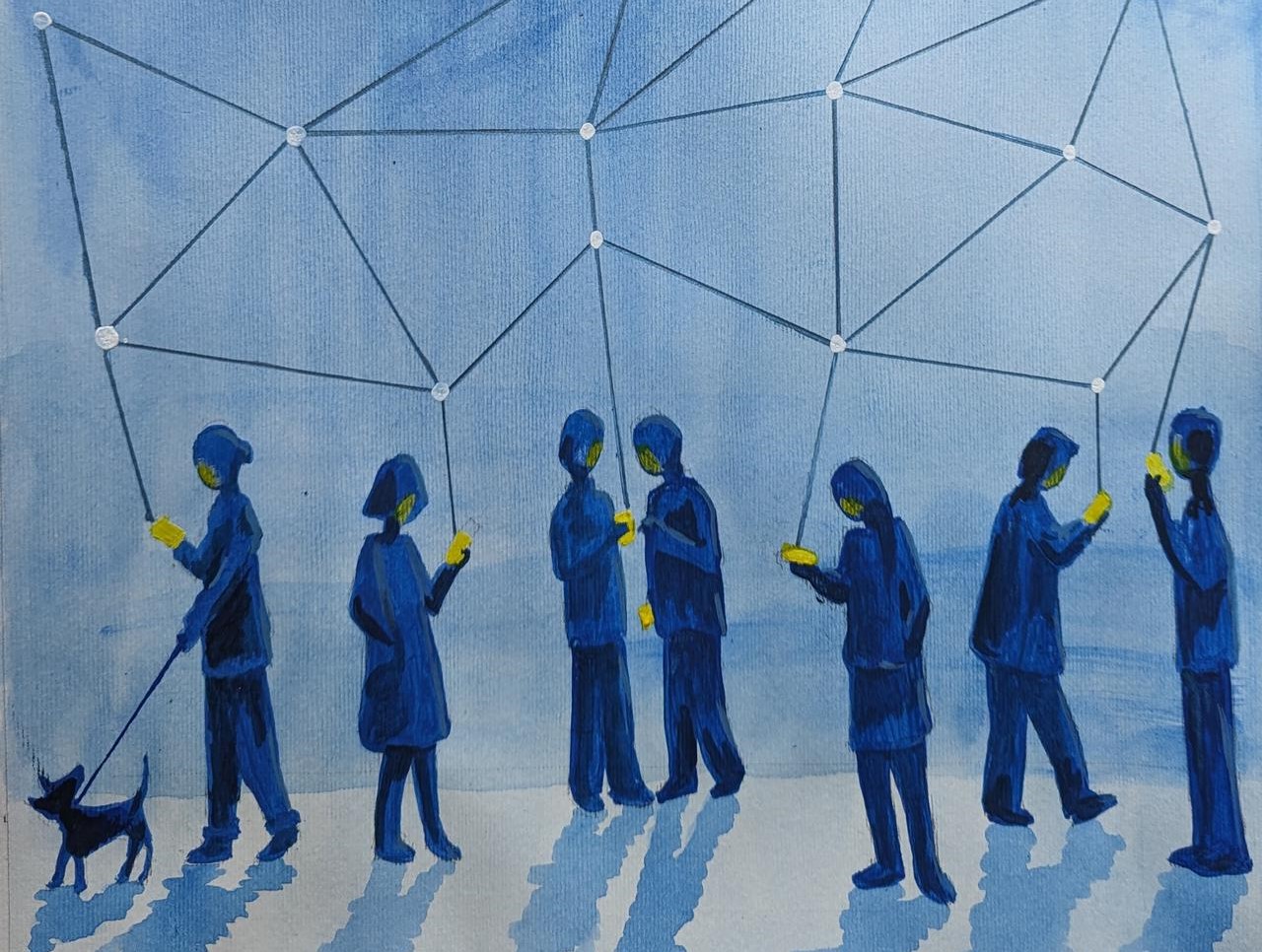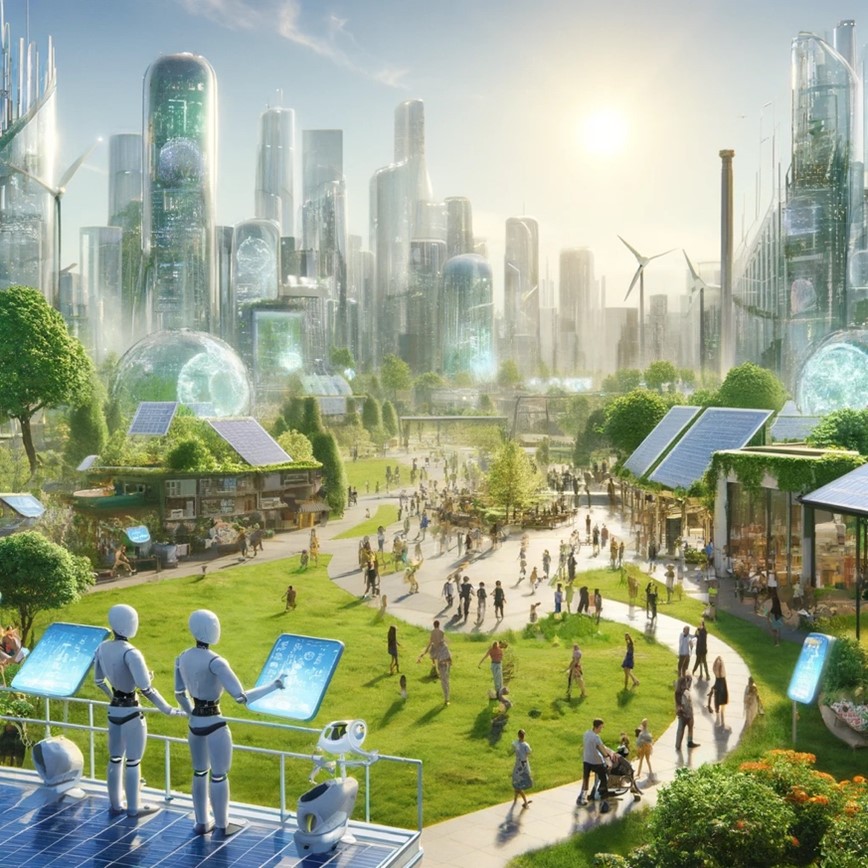
By Dr Adam Matthews, School of Education, University of Birmingham
2024 has been described as make or break for democracy worldwide with 1.5 billion citizens going to the polls in more than 50 countries.
With many claiming AI will be as disruptive as steam, electricity, printing press, TV and radio, and the internet, AI technologies will no doubt feature in policies and manifestos as citizens go to the polls worldwide.
Such social and technological change calls for serious consideration of the outcomes for all and, importantly in democracies, how citizens are to be kept informed. As well as policy positions on use and regulation of AI technologies and the communication of these positions, elections around the world are facing issues of AI generating content which looks like it has been created by a human. Drawing on huge swathes of online text and images to build large language models, new content can be generated at rapid speed and volume to add to the public sphere – a sphere that is already contending with the opportunities and challenges of information abundance.
Generative AI has the ability to create images, text, video and analysis, autonomously and in response to human prompts. These technologies have been framed as both a threat to democracy as well as democratizing access to technology. For example, I am no graphic design artist, but I have prompted ChatGPT 4.0 and DALL·E to depict text and a graphic of what a democratic utopian future of artificial intelligence might look like:

- Equitable Access
- Ethical AI Governance
- Public Participation
- AI for Social Good
- Transparency and Accountability
- Human-Centric AI
- Protection of Rights
And conversely, dystopia…

- Surveillance state
- Loss of privacy
- AI-Controlled propaganda
- Economic inequality
- Biased and unaccountable AI
- Dependency and dehumanization
- AI autonomy and rogue AI
In just a few minutes I have a useful starting point to describe AI futures in extreme utopian and dystopian fashion. Or maybe less ethically, publish the content without attribution, reference or evidence of truth. Ethan Mollick, in his book, Co-Intelligence has called such prompting ‘programming with prose’ as typing text commands into generative AI software is a much more qualitative process than traditional programming which looks for conformity and re-producibility. Prompting generative AI produces different results each time.
Amazing and frightening all at once.
Does more information mean more and better democracy?
Robert Dahl in On Democracy said that as well as having elected officials and free, fair and frequent elections, democracies require freedom of expression, alternative sources of information, associational autonomy and inclusive citizenship. AI has the potential to impact all of these, in particular, sources of information where AI can create content quickly, easily and cheaply. This is a democratizing opportunity in that information can be summarised and created in different styles, formats and languages to increase accessibility. But it’s also a threat, due to lack of confidence in accuracy and sheer volume of information available. Prior to the emergence of generative AI, information overload for citizens was an issue due to the internet and rolling 24 hour news. More information hasn’t equalled an increase in democracy or democratic outcomes. The next deluge of information is coming and it’s AI generated.
Gimme some truth, but who’s truth?
Moises Naim uses three P’s to describe the current state of politics and democracy – post-truth, populism and polarization. In 2016, the year of Donald Trump’s presidential victory in the US and the UK leaving the European Union following the Brexit referendum, post-truth was word of the year. Post-truth is an adjective defined as ‘relating to or denoting circumstances in which objective facts are less influential in shaping public opinion than appeals to emotion and personal belief’.
Other associated terms with the 2016 elections include infodemic, alternative facts, fake news, disinformation and misinformation. Elon Musk tweeted in 2022 advocating for Twitter/X to be the marketplace of ideas and truth. Twitter founder, Jack Dorsey, responded with the conundrum: truth as accurate to who?
For some, the concept of post-truth and widespread access to information has democratized access – and increased opportunities for more voices to be heard. Conversely, others argue social media algorithmically sorts us into echo chambers where we all agree and are not exposed to other perspectives. Research is ongoing in this area with claims being made that algorithms do polarise political tribes but also that platforms help to confirm and emphasise already held beliefs and values rather than change them. Others have suggested the combined effects of inequality and poor inequitable social and economic conditions result in individuals and groups seeking out conspiracy theories and fake news to explain their situation.
Using post-truth as a critique of contemporary society can push us into a space whereby we only advocate for objective facts. Democracy is built on alternative perspectives and voices and much of politics is based on values and communicating stories of the future.
Information and knowledge brokers
2024 has not been a good year so far for the media industry and journalism. Reliance on advertising and changes in Big Tech platforms have seen large job losses for journalists in 2023 and 2024. Access to reliable and accurate information is vitally important to thriving democracies and to hold power to account. The internet and social media have disrupted media and journalism business models – where do citizens now go for that reliable information? Generative AI technology has developed at a rapid pace, but the legislative and business models have not yet been formed. New business models are needed for journalists to write high quality and well researched work. This matters because journalists and the media have a key role in informing citizens of the latest developments in AI as well as holding politicians and policy makers to account in the election year of 2024. The New York Times are in a legal dispute with OpenAI over their journalistic content whilst other media companies and publishers such as the Financial Times and Axel Springer have agreed deals with AI companies to license content.
Education, as with the media and journalism, faces disruption to learning and assessment in the face of generative AI. Educators also have a role to play in supporting learners to use technologies responsibly and to critically evaluate information generated by AIs. News and media literacy are important activities that may struggle to find prominent places in the curriculum.
Universities as key knowledge producers, exchangers and brokers have a role to play through teaching, research and knowledge exchange across a wide variety of disciplines. In a post-truth environment where information is abundant journalists might well need to be more like academics and academics more like journalists. Some news outlets are adopting data and research-orientated approaches to their news content and see journalists not just as witness and storyteller, but analyst. Conversely, social scientists are taking up more creative and journalistic approaches to their objects of study.
Public institutions change slowly and often in unexpected ways in relation to technological developments. Technologies are also bound up with the social, political and cultural. In my own work I have traced these factors in the development of the idea and purpose of universities. Practices such as the lecture do not end abruptly but evolve and change with new technological affordances. I have developed the concept of the Mode 3 Network University which acknowledges the huge amount of information and knowledge generated by universities and others and how this can and must work as a collaboration with actors beyond the university rather than in one way ‘knowledge transfer’ outwards. With information abundant, universities are no longer the only providers of knowledge and content created by AI and other sources are part of the digital public sphere.
Considering the long and complex relationship between humans and technology, as AI develops at an ever faster pace, we need to consider whether our own practices are determined by the technology or whether we are influencing and shaping the future trajectories for positive outcomes socially. The world wide web and the communication and collaboration platforms that this has produced is a key aspect of dissemination of new ideas and collaboration over the past 25 years. Generative AI will be a continuation of this with both opportunities and threats to information and knowledge in society. Journalists, researchers and educators have a role as information and knowledge brokers in an ever growing and complex information ecosystem.
Policymakers making policy
Governments and politicians are grappling with the regulation of AI. In the US, President Biden signed an executive order in 2023 calling for transparency and standards in AI development. The European Union agreed the AI act which is the most comprehensive in the world, grading technologies to a risk category. High risk technologies are those deemed to impact upon fundamental rights.
However, making progress in various AI technologies could be a global advantage for nation states when it comes to commercial products, economic productivity and out and out competition. This means governments are attempting to balance regulation with innovation, a balancing act that will be key in upcoming elections.
As well as informing and educating citizens, policy makers need new and innovative approaches to generative AI and synthetic media.
Get involved in the conversation…
Many of these issues are still playing out and there are various predictions being made. The boundless possibilities as well as the challenges and ethical considerations that accompany AI are discussed in AI Futures, a public programme of free exhibitions and events showcased at The Exchange, University of Birmingham’s city centre venue. Running February to November 2024, the programme explores the brave new world of artificial intelligence through the lens of University of Birmingham research. Embark on a future-focused journey with AI Dialogues an interactive touch screen featuring leading academics from across University of Birmingham. This digital experience invites you to physically touch the future and gain first-hand insights into the advances in artificial intelligence shaping our world – directly from the experts steering them.
The views and opinions expressed in this article are those of the author and do not necessarily reflect the official policy or position of the University of Birmingham.
